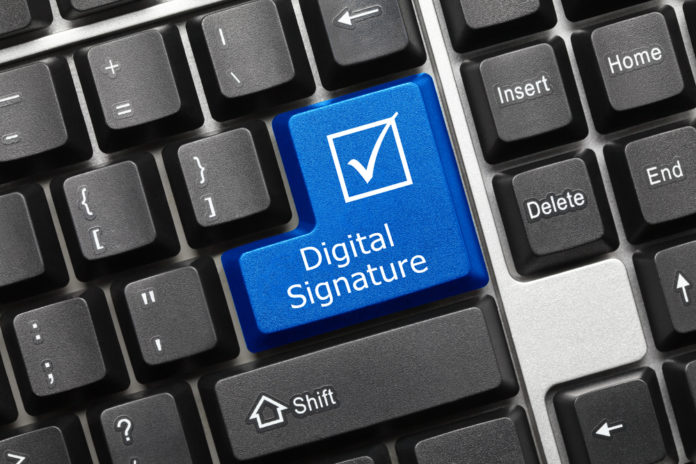Government’s motion to dismiss a claim for lack of proper certification is denied. The government argued that the digital signature on the claim did not satisfy the CDA’s certification requirements. The board found that to satisfy the CDA, a signature must be verifiable. A signature is verifiable if it can be tied to an individual. Here, the document containing the signature clearly originated from the email account of the contractor’s vice president. Moreover, the signature had been created with the contractor’s PDF software that could only be accessed with the vice president’s unique username and password. This evidence verified the digital signature.
URS Federal Services had a contract with the Air Force. Believing that it had incurred additional performance costs that were the Air Force’s fault, URS submitted a claim under the Contracts Disputes Act. URS’s Vice President of Contracts signed with claim using a digital signature created with PDF-XChange PRO software. The Air Force denied the claim. URS appealed to ASBCA. The Air Force moved to dismiss the appeal, alleging that the digital signature on the claim did not comply with CDA’s claim certification requirements.
The board noted at the outset that to satisfy the CDA, a signature must be discrete and verifiable. Discrete simply means that the signature must be separate and distinct. The digital signature here was both separate and distinct.
A signature is verifiable if one can establish its accuracy. The Air Force argued that for an electronic signature to be verifiable, it must be authenticated with a valid, trustworthy certificate. But the board rejected this definition, noting that the government routinely accepts ink signatures that do not include authenticating certificates, or, for that matter, anything else indicating who executed the document. The board refused to impose such a draconian demand on digital signatures when it was not required for ink signatures.
Rather, the board concluded that a signature is verifiable if one can establish that the mark is tied to an individual. This definition, the board reasoned, is consistent with the open policy to electronic signatures reflected in the Electronic Signature in Global and National Commerce Act, 15 U.S.C. § 7001 et seq.
Applying this definition, the board found the digital signature on URS’s claim was verifiable. The claim document and the digital signature on it plainly originated from URS’s Vice President’s email account. Additionally, the PDF-XChange PRO software that was used to create the signature could have only been accessed through URS’s computers through use of the Vice President’s unique username and password. The signature, in other words, was tied to the Vice President.
URS is represented by Terry L. Elling and Amy L. Fuentes of Holland & Knight LLP. The government is represented by Jeffrey P. Hildebrant, Colby L. Sullins, and Erika L. Whelan Retta of the U.S. Air Force.




